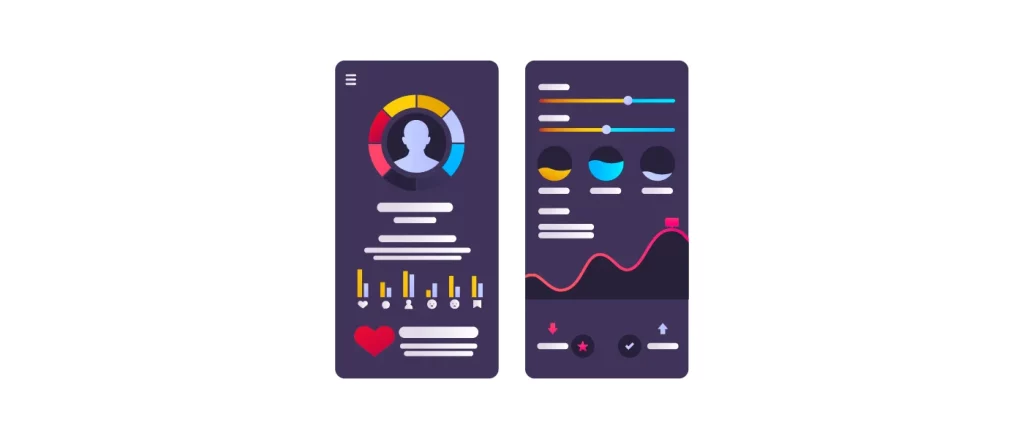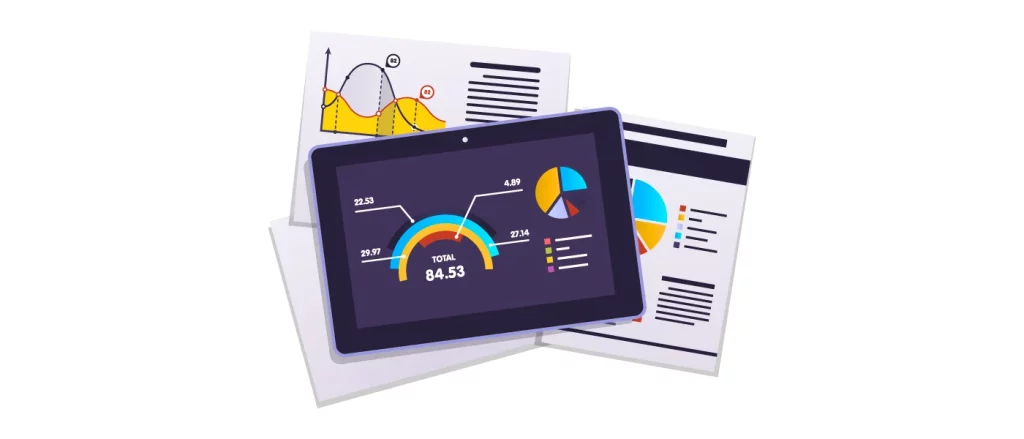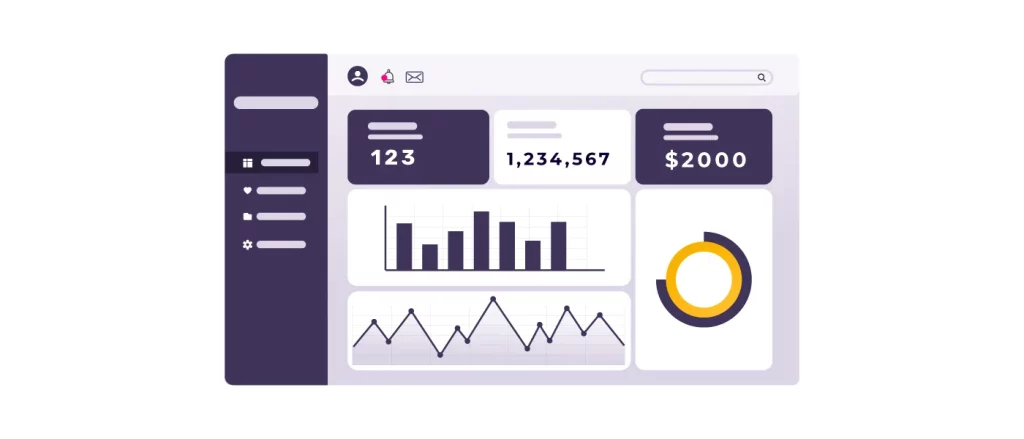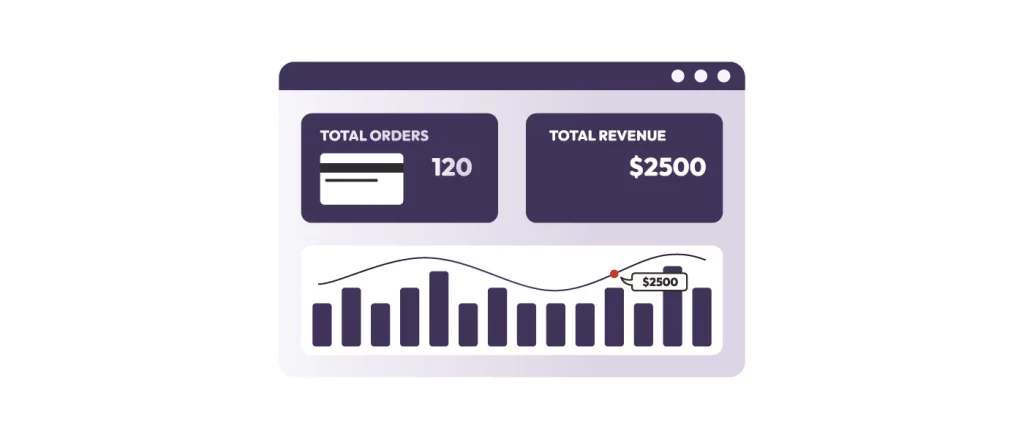Brand Awareness Metrics You Should Track in 2025
You’ve launched a campaign. Spent hours on creatives, content, and ads. But now what? How do you know if people remember your brand?
“Let’s check impressions” is too vague. “Let’s track conversions,” too late. Measuring brand awareness isn’t rocket science, but it’s not guesswork.
In this article, we’ll break down the only brand awareness metrics that matter, from social media visibility to direct traffic, so you can stop guessing and start measuring what sticks.
Table of Contents
Best Key Metrics for Brand Performance
| Metric | What It Measures | Best Tracking Tools |
|---|---|---|
| Branded Search Volume | Google Trends, Ahrefs, and Semrush. | Sprout, Brandwatch, and Onclusive. |
| Share of Voice (SoV) | Visibility vs competitors. | Sprout, Brandwatch, Onclusive. |
| Social Media Engagement | Audience interaction and emotional response. | Sprout Social, Native analytics. |
| Social Mentions | Brand buzz and awareness volume. | Brand24, Talkwalker, Mentionlytics. |
| Employee Advocacy Reach | Internal promotion and extended reach. | EveryoneSocial |
| Direct Traffic | Brand familiarity and recall. | Google Analytics |
| Backlinks | Authority and organic exposure. | Ahrefs, Moz |
| Customer Reviews & Ratings | Sentiment and trust. | G2, Trustpilot, Google Reviews. |
| Blog Traffic & Conversions | Content effectiveness and conversion path. | Google Analytics |
| Website Traffic | Discoverability and interest. | Google Analytics (GA4) |
| Referral Traffic | Visibility through external sources. | Onclusive, Meltwater. |
| Google Trends Data | Interest over time and seasonality. | Google Trends |
| Earned Media Value (EMV) | Value of unpaid brand exposure. | Onclusive, Meltwater. |
| Net Promoter Score (NPS) | Loyalty and brand trust. | Delighted, Typeform |
| Presence Score | Overall online visibility and sentiment. | Brand24 |
You can’t improve what you don’t measure; that rule hits hard regarding brand awareness. Metrics help you cut through the noise and prove your campaigns are working. Keep in mind that not all brand awareness metrics are created equal.
In the following sections, we’ve grouped the most relevant ones by social, performance, and web and explained how and when to use each. This is simple, clear, and without fluff, and it will show you how to measure brand awareness.
Strategy Boost: Know the Difference
Confused about how brand awareness fits into your bigger marketing strategy? You’re not alone.
Before diving deeper into metrics, get clear on the fundamentals: Read our guide on Marketing vs. Advertising →
Social Metrics

1. Branded Search Volume
When people search your brand name directly on Google, it’s a strong signal that they already know you.
- What it measures: Brand recall and growing interest in your business.
- When/how to use it: Use Google Trends, Ahrefs, or Semrush to track branded queries monthly. Watch for spikes during and after campaigns.
Branded searches often reflect higher intent and stronger awareness than generic queries — a sign your marketing is resonating.
2. Share of Voice (SoV)
Think of SoV as your brand’s slice of the conversation pie in your industry — across social, blogs, PR, and SEO.
- What it measures: Relative visibility compared to competitors.
- When/how to use it: Use Sprout, Brandwatch, or Onclusive to track media mentions and impressions. These are great for competitive benchmarking.
Nielsen found that increasing SoV often leads to long-term market share growth. A 10-point difference between Share of Voice (SOV) and Share of Market (SOM) can lead to a 0.5% increase in market share.
3. Social Media Engagement
Likes, shares, comments, and saves show how your audience responds to your content emotionally and interactively.
- What it measures: Content relevance, emotional connection, and audience involvement.
- When/how to use it: Track per platform, per post type, and by timing. Use native analytics or tools like Sprout Social.
Stories that tap into real emotions tend to stick. They’re not just seen; they’re felt. That makes emotional storytelling such a powerful way to leave a lasting impression.
4. Social Mentions
You gain exposure and insight whenever someone mentions your brand in tweets, stories, comments, or articles.
- What it measures: Organic brand buzz and volume of awareness.
- When/how to use it: Use Brand24, Talkwalker, or Mentionlytics to monitor real-time mentions and perform sentiment analysis for deeper understanding.
Tracking mentions helps you catch trends early, join relevant conversations, and respond when your brand’s reputation is at stake.
5. Employee Advocacy Reach
When your team members share company content, your brand spreads faster — and more authentically.
- What it measures: Internal engagement and organic audience reach from personal networks.
- When/how to use it: Use platforms like EveryoneSocial to track post reach, engagement, and top advocates.
Employee-shared content performs 8x better than branded content.
Stay Top-of-Mind with Retargeting
Getting noticed is just the start, yet staying remembered is the real game. That’s where retargeting comes in.
Learn how to re-engage visitors and turn brand awareness into conversions: Explore our Retargeting Guide →
Performance Metrics

6. Direct Traffic
This type of traffic comes straight to your site — no ads, no referrals, just people typing in your URL or clicking a saved bookmark.
- What it measures: Brand familiarity, top-of-mind recall, and user intent.
- When/how to use it: Use Google Analytics to track direct traffic over time. Compare before, during, and after campaigns for insight into awareness impact.
Consistent increases show your brand is being remembered without prompting.
7. Backlinks
Backlinks show that other sites are referencing yours, a digital form of word-of-mouth.
- What it measures: Website authority, credibility, and organic brand exposure.
- When/how to use it: Use tools like Ahrefs or Moz to track backlink growth and quality. Look for links from relevant and high-authority domains.
Did you know that 91% of pages get zero organic traffic due to a lack of backlinks?
8. Customer Reviews & Ratings
What people say about your brand online can boost or break your reputation.
- What it measures: User sentiment, social proof, and public perception.
- When/how to use it: Track reviews across G2, Trustpilot, or Google Reviews. Analyze trends and react quickly to negative feedback.
Consistently positive reviews fuel word-of-mouth and build trust faster than most paid tactics.
9. Blog Traffic & Conversions
Content marketing isn’t just for SEO; your blog can be a gateway to awareness and leads.
- What it measures: Content discoverability and how well it nurtures visitors toward action.
- When/how to use it: Use Google Analytics to track top-performing blog posts and where traffic/conversions are coming from. Focus on content performance that builds awareness and moves users down the funnel.
Increased blog-driven conversions signal that users found your brand and trusted it enough to act.
Don’t Let Logic Slip in Your Messaging
Strong brand awareness starts with smart messaging—but even the best campaigns can fall into logical traps.
Avoid the most common advertising fallacies and keep your message sharp: Read the Fallacies in Advertising Guide →
Web Metrics

10. Website Traffic
When overall traffic to your site grows, it usually means your brand awareness efforts are working.
- What it measures: Discoverability, campaign visibility, and audience interest.
- When/how to use it: Track in Google Analytics (GA4) across traffic sources: organic, direct, referral, and paid. Focus on sessions, users, and new vs. returning visitors.
Spikes in traffic right after a campaign launch = great visibility moments.
11. Referral Traffic
Referral traffic comes from visitors who land on your site via a link from another domain, such as a blog or media outlet.
- What it measures: Brand mentions, reach, and partnership performance.
- When/how to use it: Track it under “Acquisition > Referrals” in GA4. Look at volume and engagement (bounce rate, time on site).
A high number of referrals from relevant sites = brand authority.
12. Google Trends Data
Looking at Google Trends gives you a zoomed-out view of how interest in your brand shifts over time.
- What it measures: Search popularity, regional interest, and campaign impact over time.
- When/how to use it: Use Google Trends to compare your brand vs. competitors or see how awareness rises during campaign periods.
Useful for seasonal brands or spotting drops in interest before they affect traffic.
Amplify Awareness with the Perfect Press Release
Press coverage is one of the most powerful brand awareness drivers, if you know how to earn it.
Learn how to craft press releases that actually get picked up: Read the Press Release Writing Guide →
Bonus Metrics

13. Earned Media Value (EMV)
EMV puts a price tag on all the unpaid attention your brand gets — from PR hits to social mentions.
- What it measures: The estimated value of organic exposure across various channels.
- When/how to use it: Use Onclusive or Meltwater to calculate EMV. This method is ideal for evaluating ROI without a clear conversion path.
Pair it with Share of Voice for a complete picture of coverage quality vs. quantity.
14. Net Promoter Score (NPS)
NPS is a quick way to understand how loyal your customers are — and if they’d recommend your brand to others.
- What it measures: Customer satisfaction, loyalty, and brand trust.
- When/how to use it: Send NPS surveys after key interactions (purchase, support, signup). Tools like Delighted and Typeform make it easy.
Scores above 50 are excellent; you’re creating advocates, not just customers.
15. Presence Score
Presence Score is a composite score (0–100) from tools like Brand24 that sums up how strong your brand is online.
- What it measures: Mentions, visibility, and sentiment — all rolled into one easy number.
- When/how to use it: Use it for reporting or benchmarking. It helps teams and executives assess campaign impact quickly.
Best used as a snapshot of brand strength during or after awareness pushes.
FAQ
Brand awareness refers to how familiar your target audience is with your brand’s identity, products, or services. It’s a foundational element in marketing that influences consumer decisions and loyalty.
Poor brand awareness can result from inconsistent messaging, lack of targeted marketing efforts, insufficient online presence, and failure to effectively engage with the target audience. Neglecting brand awareness metrics, especially on social media platforms, can diminish visibility.
Building brand awareness is crucial as it fosters trust, differentiates your brand from competitors, and increases consumer purchase likelihood. Strong brand awareness can lead to higher market share and customer loyalty.
Recognition: Consumers identify the brand through visual or auditory cues.
Recall: Consumers can remember the brand without prompts.
Top-of-Mind: The brand is the first that comes to mind in its category.
Preference: Consumers prefer the brand over competitors.
Branding is how you shape your brand’s identity through design, tone, and messaging. Brand awareness is the result; it reflects how well your audience recognizes and remembers that identity. One is strategy, the other is impact.
Final Thoughts
Now that you’ve seen how each metric contributes, brand awareness feels much less abstract. It’s not about tracking everything; it’s about tracking what tells you something.
Whether looking at branded searches, engagement, or direct traffic, these signals help you stay in tune with how your brand appears and sticks. Start small, stay consistent, and let the data guide what comes next.